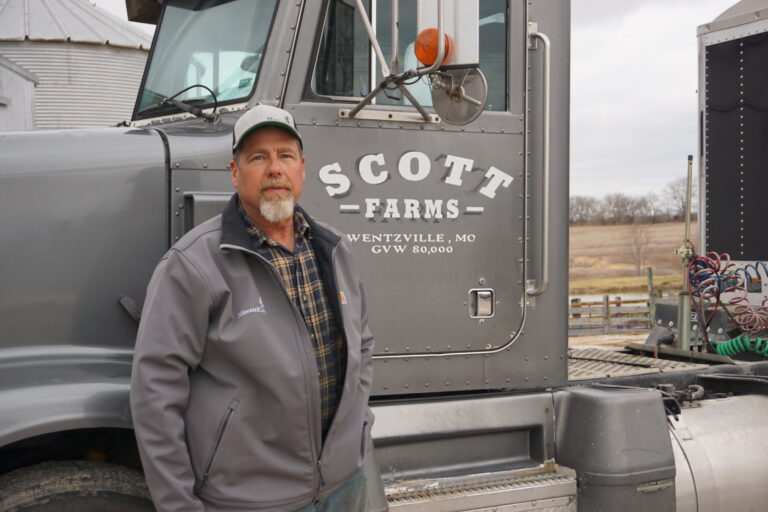ST. LOUIS — Mark Scott has been farming corn and soybeans on his family’s land outside of St. Louis for more than 30 years, and he has never seen fertilizer prices as high as they are now.
“It’s doubled in price since last year,” Scott said. “I locked up all my nitrogen this morning before it took another jump and it’s probably 38-40% higher than last year.”
On a blustery March morning at his 2,000 acre farm he runs with his son, Scott said it’s a concern for him and the farmers he represents on the Missouri Corngrowers Association Board.
“We may be at a loss this year versus last year just due to the high input prices,” he said.
Fertilizer prices began to sharply increase last year because of supply chain problems and natural disasters shutting down some big plants. Prices rose so high that the Family Farm Action Alliance asked the Department of Justice to investigate and the Iowa Attorney General announced his own inquiry.
Then Russia invaded Ukraine. Economic sanctions quickly followed, limiting Russia’s ability to export fertilizer and its raw ingredients. The country’s exports account for 18% of the world potash market, 20% of ammonia sales and 15% of urea. Plus a lot of natural gas, the most expensive part of making nitrogen fertilizers, comes from Russia.
And while the U.S. doesn’t buy much fertilizer directly from Russia, other countries that do are now shopping among America’s suppliers.
“We always see shifts in prices for lots and lots of reasons, but this has been very dramatic in a very short period of time,” said Pat Westhoff, director of the Food and Agricultural Policy Research Institute at the University of Missouri.
Westhoff said the timing of when farmers locked in their prices will be hugely important this year.
Farmers typically sign contracts to buy inputs like fertilizer and seeds for a certain price even though they take delivery months later. They also do the same with crops they grow, agreeing to a sale price sometimes before seeds are even in the ground.
“If you forward contracted your grain a while ago at much lower prices than we have now but didn’t arrange for your fertilizer supplies, you could be in really deep trouble right now,” Westhoff said.
Wheat, corn and soybean prices are also way up because of sanctions against Russia and the uncertainty of Ukraine’s production and its inability to export. Yet the inclining prices of both fertilizer and grains aren’t guaranteed to offset each other, according to Randy Throener.
“Right now the two markets are working together. But they don’t always work together, and that’s the risk that comes this spring and this summer,” said Throener, a partner with BKD, a Springfield, Missouri-based accounting firm that works with farmers.
Throener said a deep drop in grain prices with fertilizer costs skyrocketing could be disastrous.
“That’s kind of the worst-case scenario. A farmer is seeing the prices go up and holds off on getting under contract until it’s too late, and these fertilizer inputs are going up and eating away at all of their margins,” he said.
Outside of trying to time the market or getting lucky, there isn’t much farmers like Mark Scott can do. He’s planning to plant a few more soybeans this year, but reducing the amount or frequency of applying fertilizer isn’t an option for Scott.
“We do extensive soil testing, and our fertilizer is applied differently acre by acre using GPS,” he said. “Cutting back on that would reduce yield this year and maybe put us behind next year, too.”
But farmers say you have to be an optimist in this business and make decisions with limited information. This year is no different.
Follow Jonathan on Twitter: @JonathanAhl
This story was produced in partnership with Harvest Public Media, a collaboration of public media newsrooms in the Midwest. It reports on food systems, agriculture and rural issues. Follow Harvest on Twitter: @harvestpm
9(MDM5MjE5NTg1MDE1Mjk1MTM5NjlkMzI1ZQ000))

